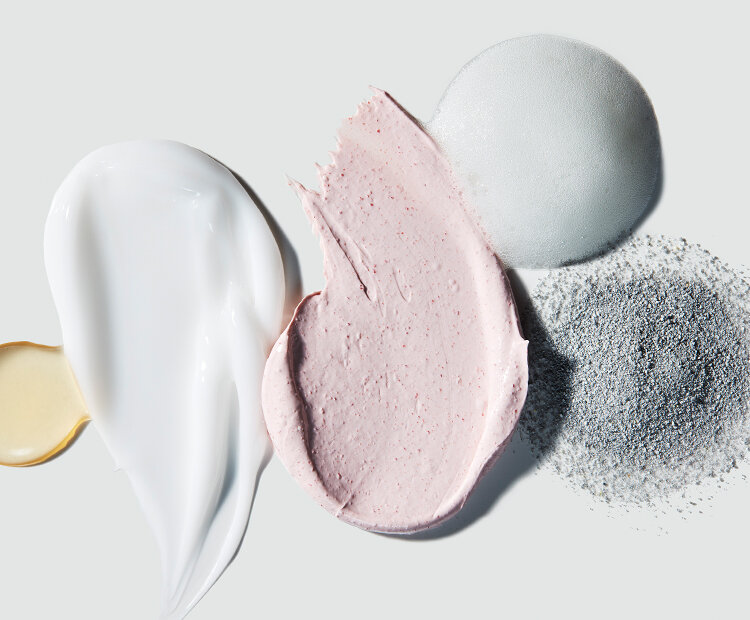The Simple Guide to Reading Product Labels
When I found out I had breast cancer back in 2002, my diagnosis triggered a total shift in my lifestyle. I changed my diet, started an exercise routine, and began paying way more attention to the chemicals in my skincare and body products. Since our skin absorbs whatever we put on it, I wanted to become more savvy about the shampoo, moisturizers, and deodorant I use every day.
When I started out on this endeavor, I’d often turn to the back of my beauty products, only to be faced with a long list of uber-long words and unrecognizable ingredients. Yes, reading a label for ingredients can be daunting! But whether I’m purchasing a drugstore deodorant or a moisturizer from an upscale spa, the first thing I look for is the ingredient list. It’s the only way I can be certain that my favorite skincare products are truly safe.
But how can any of us tell which ingredients are good for us and which aren’t? And what about those long, technical ingredient names? Here are some tips I learned from my adventures in label-reading!
Image source: Derm Store
First, find the ingredient list.
Every skincare or makeup product should have its full ingredients listed on the packaging. If it’s not listed on the actual tube or jar, it might be on the outer carton (also check for peel-back or “accordion-style” stickers, which are common on products that come in small containers). Regardless, it should be somewhere you can easily find it — you shouldn’t have to dig for the information online or elsewhere.
Image source: Derm Store
Research the ingredients.
Once you’ve located the list of ingredients, the next thing to do is to find out what the ingredients are, and begin to learn about the purpose each serves in the product. You’ll probably see multi-syllable, ultra-long words that you may not be able to pronounce — but just because something has a convoluted, confusing name doesn’t mean it’s unsafe. Take care to research these kinds of ingredients to confirm that you’re comfortable with them having a place in your skin care routine.
The Cosmetic Ingredient Dictionary is one of my favorite resources, containing the definitions and descriptions of hundreds of skincare and makeup ingredients, as well as research supporting their use in cosmetics. Once you spend some time there, you’ll become familiar with the most common ingredients and be able to identify them quickly.
While getting familiar with all potentially harmful ingredients in cosmetics is a good idea, it’s a lot to remember. I recommend creating your own personal list of ingredients that you feel are important to avoid -- for example, I always steer clear of products that contain known carcinogens like parabens and aluminums, as well as endocrine-disrupting ingredients such as phthalates and sulfates.
Check out the concentration levels.
Ingredients are listed in descending order from the greatest amount to least amount present in the product (except ingredients present at a concentration of less than 1%; those can be listed in any order). In general, the higher up on the ingredients list an ingredient appears, the higher the concentration in the product as a whole.
One way to decode a cosmetic product is to check the first five and the last five ingredients on a label. The first five ingredients make up the majority of the product. This is where you will find synthetic emollients and harsh foaming agents. The last five ingredients are often preservatives and fragrance ingredients.
Usually, the first item in a product is water, which brings me to my next label-reading tip.
Find the preservation method.
Every personal care product that has water in it needs a preservation method, or otherwise it could grow mold. One category of preservatives you’ve probably heard of avoiding is parabens, which many studies have indicated are carcinogenic. Parabens can irritate the skin or cause allergic reactions, and some have also been linked to hormone disruption because of their estrogenic activity — in other words, the chemical mimics the hormone estrogen. If you’re looking for paraben-free beauty, look for phenoxyethanol or ethylhexylglycerin on skincare labels, two of the safest preservatives on the market.
Understanding fragrance.
More often than not, you’re going to stumble across fragrance — which shows up in various forms (think “parfum,” “perfume,” or simply “fragrance”). You might even see aroma or flavor. Even products that are labeled “unscented” can have fragrance; it’s completely legal to add masking fragrance to the formula, so be sure to check. This can be problematic because the current labeling act from the 1970s doesn’t require ingredients within the term “fragrance” to be listed, meaning that unless a company is super transparent, you don’t know what’s falling under the term “parfum.”
If “fragrance” is on the list, check for a notation to see if those ingredients are naturally sourced.
Know the source.
Whether through the brand or the boutique that stocks them, it’s helpful to know (and trust) who you’re purchasing your beauty products from. Check out brand websites and look for their ingredient commitment and information on the ingredients they source. If they are simply putting up flashy terms or using the latest “it” ingredient with nothing to back it up, be cautious.
When I founded Carmel Naturals, I wanted to create a brand that wellness-minded folks could trust. That’s why we only use simple, wholesome ingredients in our formula. Our ingredient list is easy to locate and read, so you can make the best-informed choices for your body.
You can always find more information about each ingredient in our deodorant on our website, where we break down the benefits of each ingredient and why we included it in our formula!
With these tips in mind, you’re now ready to do your own fact-finding to select the products that will do the most good for your skin!

